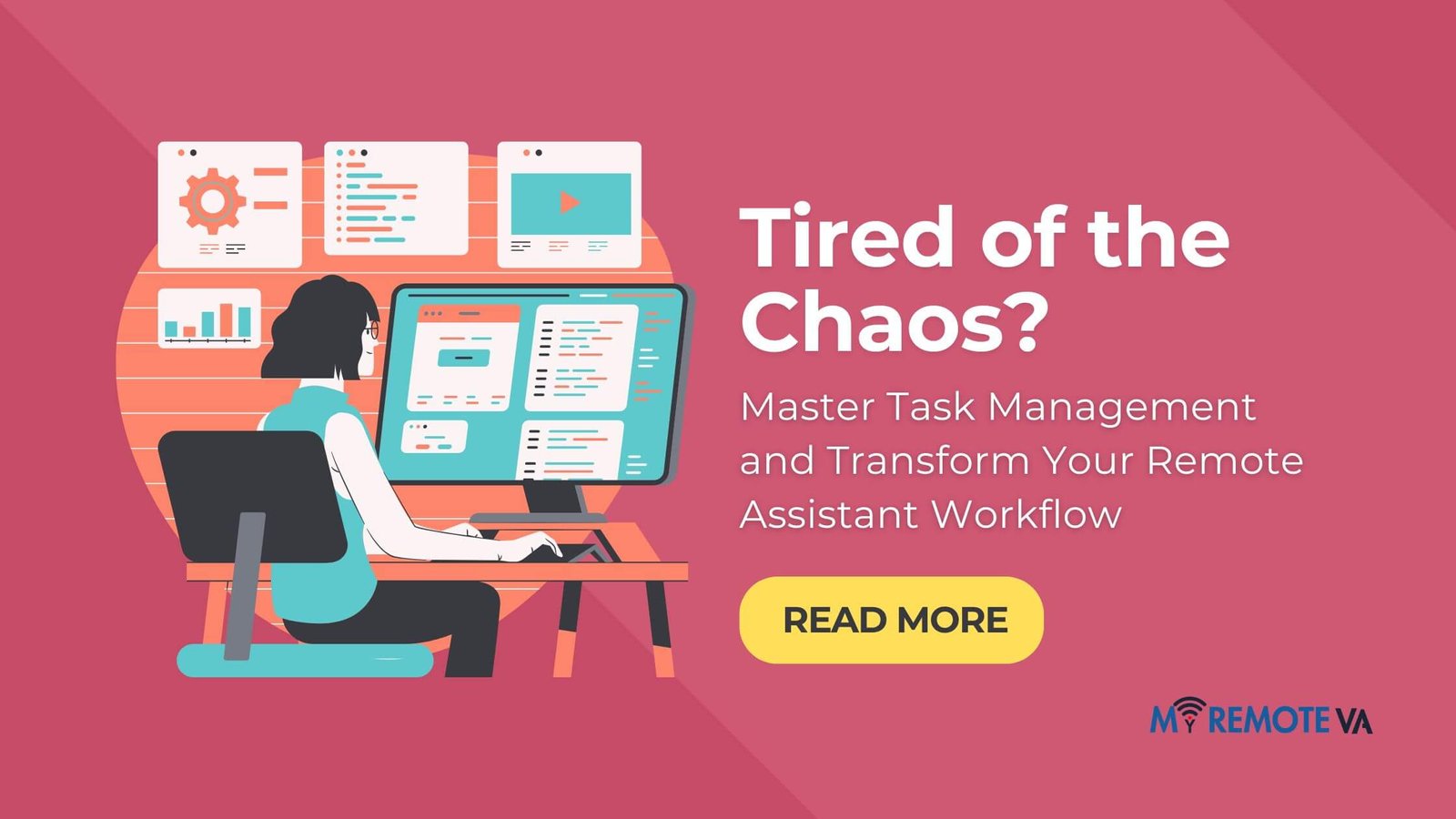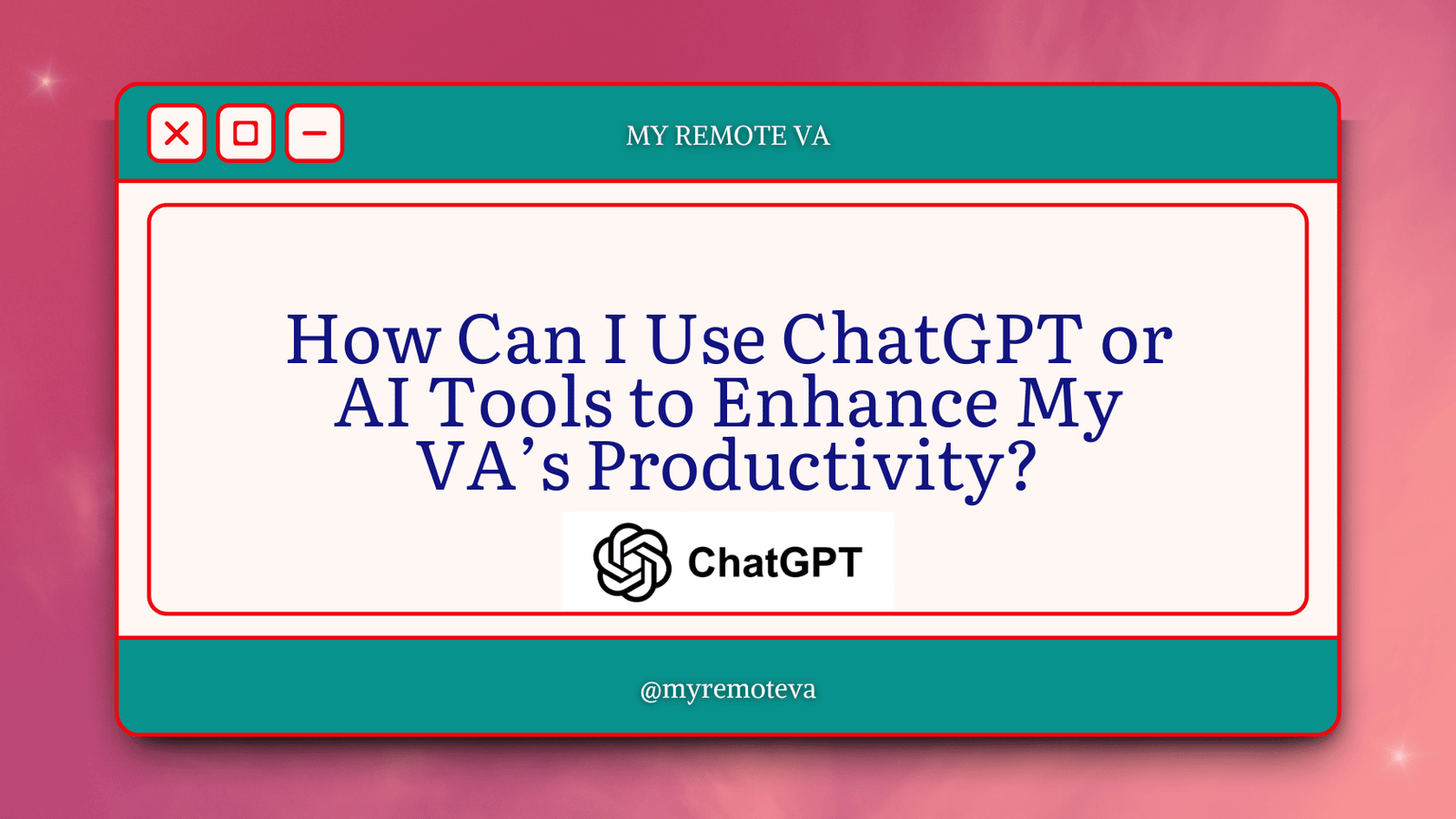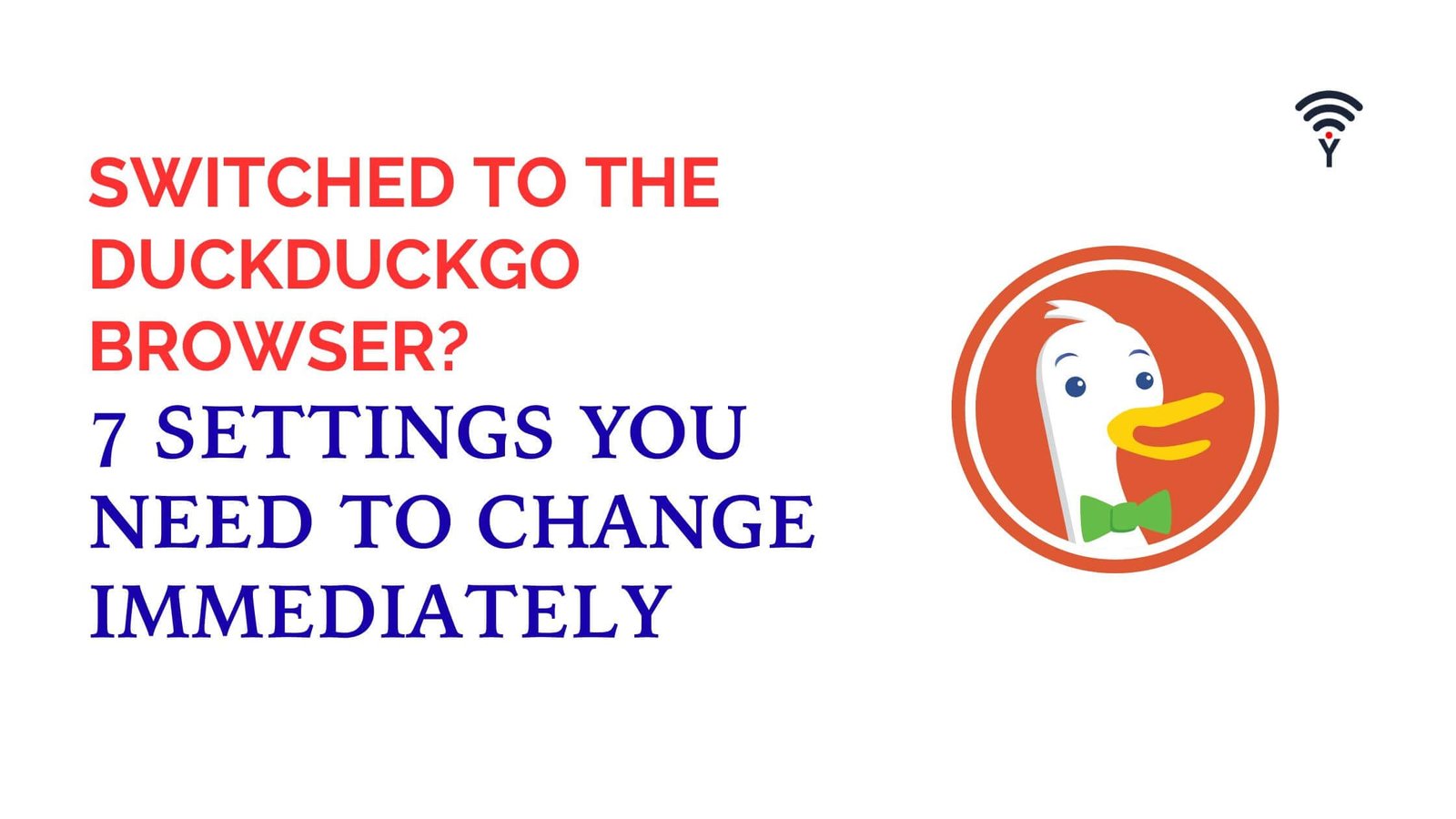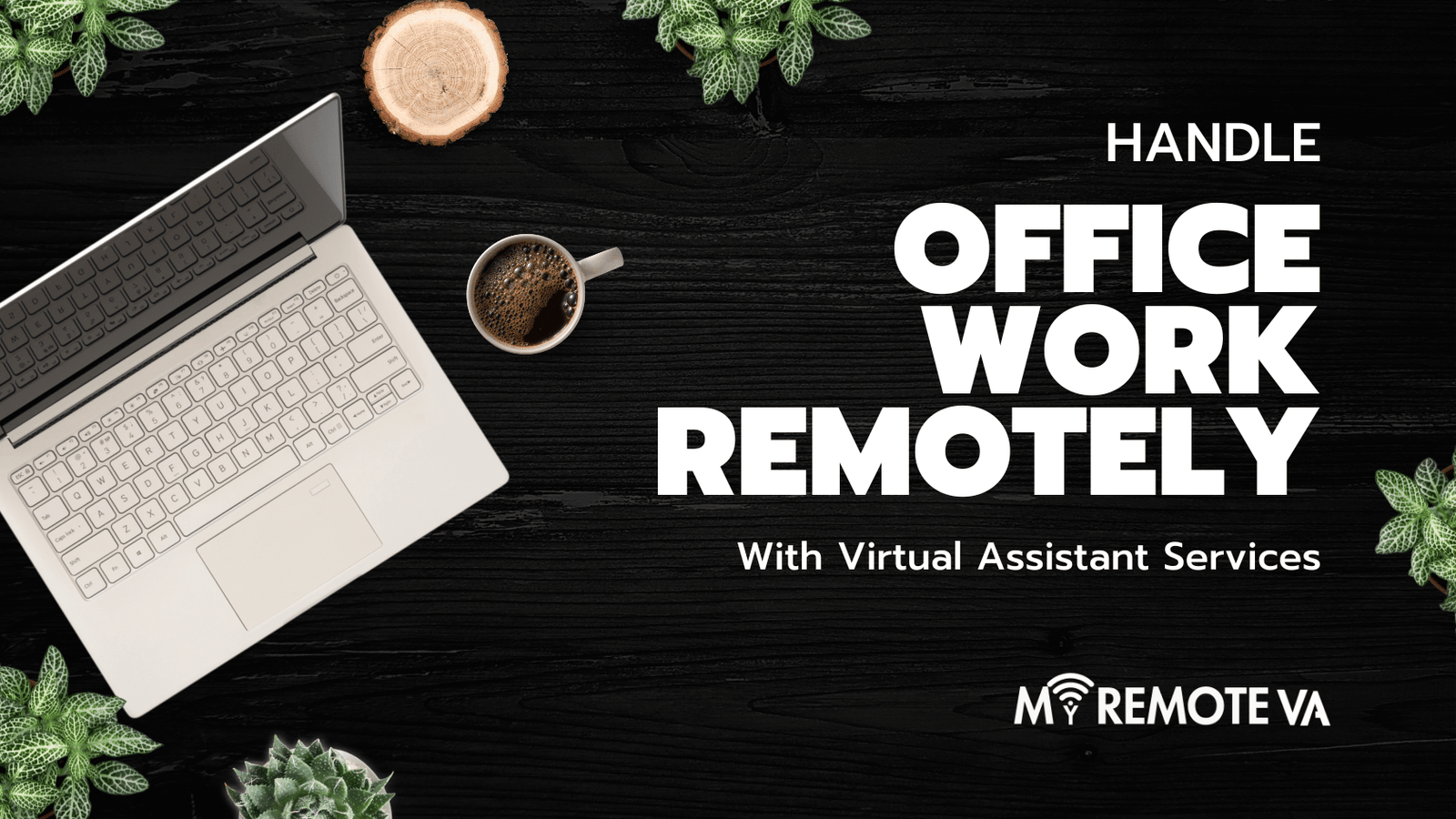Ever feel like you’re juggling flaming chainsaws? That’s what being a remote assistant can feel like without a solid system in place. The emails pile up, the Slack messages chime, and suddenly, you have ten different clients asking for ten different things. Sound familiar? The truth is, the magic of being a truly incredible remote assistant isn’t about being faster at typing or having a dozen certifications. It’s all about a simple, repeatable, and seriously smart approach to task management. It’s the difference between feeling like you’re constantly putting out fires and feeling like you’re the one in control, steering the ship with a cool hand.
I learned this the hard way. My first few months as a VA were a mess of digital chaos. My desktop was a graveyard of half-finished documents, my notes were scattered across three different apps, and I’d often find myself doing work for one client only to realize I was late on a deadline for another. It was stressful, to say the least. My brain felt like a browser with a hundred tabs open. I knew I needed to get my act together, not just for my sanity but for my clients’ trust. That’s when I stopped just “doing” tasks and started building a system for how I handled every single one of them. It was a complete game-changer.
Let’s get one thing straight: you don’t need a crazy-expensive, complicated software to get started. You just need a system. Let’s build one together.
Choosing the Right Tools for Your VA Workflow
Every great task management system starts with a home base—a place where all your tasks live and breathe. You wouldn’t try to build a house with just a screwdriver, would you? The right project management tool is your complete toolbox. It’s the central nervous system for your entire remote operation. The key is finding one that feels right to you and works seamlessly with your clients. You want something that promotes transparency and keeps everyone on the same page, whether you’re handling a simple social media calendar or a multi-phase product launch.
If you’re just starting out, or if you prefer a visual approach, you can’t go wrong with Trello. It’s like a digital whiteboard with sticky notes. You create different boards for each client or project, and each sticky note (a “card”) is a specific task. You can drag and drop cards between columns like “To Do,” “In Progress,” and “Done.” It’s incredibly intuitive and perfect for managing a visual list of your workload. I still use it for simple projects because it’s so easy to see where everything stands at a glance.
Once your business grows and your projects get more complex, you might need something with a little more muscle. This is where platforms like Asana, ClickUp, or Monday.com come into play. These are full-blown project management powerhouses. They let you do things like set up automated rules (like “when a task is marked done, send an email”), create sub-tasks within a single task, and view your projects as a calendar, list, or even a Gantt chart. These tools are fantastic for keeping track of every tiny detail across multiple clients and big-picture projects. You’ll quickly see that the right tool isn’t a luxury; it’s a necessity for managing a bustling VA business.

Creating Your Master Plan: The Remote Assistant Workflow
A great tool is only as good as the system you build around it. Your remote workflow is your personal operating manual. It’s the set of rules that dictates how tasks enter your world, how you decide what to work on first, and how you complete them. Without this plan, even the best software will just become another source of clutter. Let’s make sure that doesn’t happen.
Building a Single Inflow for All Tasks
First things first, where do new tasks come from? If you’re like most remote assistants, they probably come from a dozen places: an email, a text message, a quick Slack chat, or even a casual mention on a phone call. This is a recipe for disaster. You need to establish one single, agreed-upon channel for all new tasks. This could be a dedicated email inbox, a shared board on Asana, or a specific Slack channel. By corralling everything into one place, you prevent anything from slipping through the cracks and you immediately feel more in control.
Prioritizing with a Purpose
Once tasks are in your system, the most crucial step is to prioritize. If you just tackle the easiest or most recent request, you’re not actually being productive; you’re just being busy. The goal is to focus on what matters. My favorite method for this is the Eisenhower Matrix, which breaks tasks down into four simple categories:
- Urgent & Important: Do these immediately. Think a client’s website is down or a critical deadline is looming.
- Important, but Not Urgent: Schedule these. These are your “big picture” tasks that move a project forward, like planning a marketing campaign or writing a blog post.
- Urgent, but Not Important: Delegate or automate. These are the quick-hit requests that interrupt your flow. Can you create a template to handle them, or can they be passed off?
- Neither Urgent nor Important: Delete or ignore. Let’s be real—some tasks just don’t need to be done.
Using this framework helps you stop reacting to every notification and start working on the things that truly move the needle for your clients and your business.
Daily Habits for an Efficient Remote VA
Okay, so you have your tools and your prioritization system. Now what? It’s all about putting it into practice with smart daily habits. This is where you go from good to great.
Time Blocking and Task Batching
Ever feel like your day flies by and you have nothing to show for it? Time blocking is the answer. Instead of a vague to-do list, you actually block off chunks of time in your calendar for specific types of work. I block out an hour every morning for “Inbox Zero” and then a two-hour block for “Client A’s Content Creation.” This prevents me from getting distracted and ensures I’m dedicating focused, uninterrupted time to my most important tasks. It’s like putting on blinders and just getting to work.
Pairing this with task batching is even more powerful. Instead of jumping from an email to a social media post to a graphic design request, you group similar tasks together. I dedicate specific blocks of time to all my email management, then another block to all my writing, and another for all my administrative tasks. This drastically reduces the mental friction of context-switching. It also makes you faster and more efficient. For more on this, check out our guide on how a VA differs from an Online Business Manager; a major difference is the focus on these types of efficiency hacks.

Using the Pomodoro Technique
Big projects can feel overwhelming, can’t they? That’s when I turn to the Pomodoro Technique. It’s so simple and effective. You work for 25 minutes straight with no distractions, then take a 5-minute break. After four of these cycles, you take a longer break of 15-30 minutes. It’s like a mental reset button. Not only does it help you stay focused, but it also forces you to take breaks, which is a key to preventing burnout. I can’t tell you how many times I’ve used this to tackle a huge, daunting project, and suddenly it doesn’t seem so intimidating anymore.

Advanced Strategies: Automate and Delegate
You’ve got the basics down, now let’s talk about leveling up. The next step in your VA journey is to start thinking like a strategic partner for your clients. This means finding ways to be even more efficient and indispensable.
Automate the Small Stuff
Are you doing the same task over and over again? Scheduling a repetitive meeting, sending a standard follow-up email, or moving a card from “To Do” to “In Progress”? This is where automation comes in. Tools like Zapier and IFTTT can connect your different apps and create simple “if/then” rules. For example, “if a new task is added to my Trello board, then create a new entry in my Google Calendar.” These tiny automations might seem small, but they add up to hours of saved time every week. You’ll be amazed at how much you can automate once you start looking for it.
Create Your Own Manuals with SOPs
Standard Operating Procedures, or SOPs, are your secret weapon. Think of them as your personal how-to guides for every process you handle. For instance, you could have an SOP for “Onboarding a New Client,” which details every step from sending the welcome email to setting up their file folders. SOPs ensure consistency and quality, and they make it incredibly easy to delegate work to a new team member if your business grows. In fact, a successful virtual assistant business is often built on a foundation of these kinds of well-documented processes.

The Human Element: Communication is Key
At the end of the day, no amount of tech or strategy can replace clear communication. A perfect task management system is a tool for better communication, not a replacement for it. The best remote assistants are those who are proactive in their updates, transparent about their progress, and aren’t afraid to ask for clarity. When a client can look at your shared task board and see exactly what you’re working on, what’s been completed, and what’s next, it builds immense trust. It shows you’re on top of your game and helps them feel secure in the partnership. Remember, you’re not just a task-doer; you’re a partner. And partners communicate.
Mastering task management for remote assistants isn’t about being perfect. It’s about being prepared. It’s about creating a system that allows you to confidently handle anything that comes your way, so you can stop putting out fires and start building things that matter.
Frequently Asked Questions About Remote Task Management
What are the most popular task management tools for VAs?
For VAs, the most popular tools tend to be Trello for its simplicity, Asana and ClickUp for their robust features, and Monday.com for its flexibility. The best tool for you really depends on your personal preference and the complexity of your clients’ projects. Don’t be afraid to try a few free versions to see what clicks for you.
How can a remote assistant handle tasks from multiple clients?
The best strategy is to use a centralized project management tool with a dedicated board or project for each client. This keeps everything separate and organized. Additionally, using time blocking to dedicate specific chunks of your day to each client ensures you give each one the attention they need without feeling scattered.
Is time tracking necessary for remote assistants?
Time tracking is a game-changer. Not only does it help you bill clients accurately, but it’s also a powerful tool for self-assessment. It shows you exactly where your time is going and helps you identify areas where you can be more efficient. Tools like Toggl Track or Clockify make it easy to start and stop the timer with a single click.
What is the best way to prioritize tasks when everything seems urgent?
When you feel like you’re drowning in urgent requests, the best thing you can do is pause and prioritize. The Eisenhower Matrix is my go-to for this. It helps you quickly sort tasks into four categories based on urgency and importance. This simple exercise can bring a lot of clarity and calm to a chaotic day and helps you focus on what really matters.
How can I avoid burnout as a remote assistant?
Burnout is a real danger in the remote world. The best way to avoid it is by setting clear boundaries. Use your task management system to manage your workload realistically, and don’t be afraid to communicate with your clients if you’re feeling overwhelmed. Techniques like the Pomodoro method also help ensure you’re taking regular breaks to rest and recharge throughout the day.













